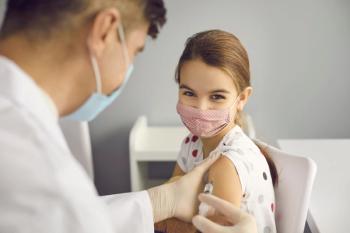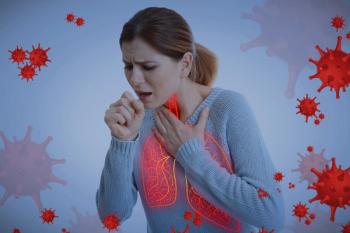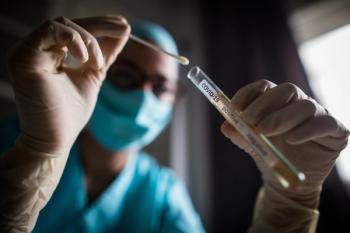
In the Fight Against Long COVID, Paxlovid Offers Limited Protection
The antiviral combination nirmatrelvir-ritonavir (Paxlovid) used for early symptoms of COVID-19 offers limited protection against the development of Long COVID.
Use of the antiviral combination nirmatrelvir-ritonavir (Paxlovid) for early symptoms of COVID-19 offered limited protection against the development of Long COVID, in a VA study finding some reduced risk for thromboembolic events but not for 30 other potential post-COVID conditions (PCCs).1
George Ioannou, BMBCh, MS, director of Hepatology, Veterans Affairs Puget Sound Healthcare System, Seattle, WA, and colleagues point out that most studies that have suggested that the early antiviral treatment could reduce risk of PCCs have been observational.
"Real-world effectiveness studies that adhere to target trial emulation principles are needed to evaluate whether COVID-19 pharmacotherapies, including nirmatrelvir-ritonavir, are effective at reducing risk for PCCs," Ioannou and colleagues indicate.
To address that gap, the investigators conducted a retrospective matched cohort study to emulate a randomized controlled trial, comparing matched populations treated for COVID-19 with, and without nirmatrelvir-ritonavir.
Electronic health record (EHR) data from the Veterans Health Administration (VHA) as well as Community Care and CMS-Medicare data were used to identify 191,056 veterans with a first positive SARS-COV-2 test during the period of January through July 2022. The study cohort comprised 9593 persons who received the antiviral and a matched group of 9593 who did not.
The investigators note that a much larger proportion of untreated than treated persons were excluded due to hospitalization on, or on the day after testing positive. The study conditions that facilitated assessment of potential drug effect included the timely administration of the antiviral treatment, and a population at relatively high risk for developing PCCs.
"The entire population of VA enrollees who tested positive for SARS-CoV-2 and were treated with nirmatrelvir-ritonavir that were included in this study and their matched comparators actually had a very high risk of PCCs," Ioannou told Contagion.
Ioannou noted the advanced age of population (mean 66 years), and that comorbid conditions such as obesity and diabetes were common. The antiviral treatment had been administered within 5 days of testing positive, which was a criterion for inclusion in the study. In practice, Ioannou indicated, 93.2 percent of study participants were treated on the day of testing positive or the following day.
The primary end point was emergence of any of 31 individual conditions which have been described in the literature as PCCs or postacute sequelae of COVID-19. The investigators assessed incidents by organ system as well as individually, to account for the potential heterogeneity of PCCs and of the effect of the antivirval on PCC risk.
The 31 to 180-day cumulative incidence of individual and organ system PCCs was found to be similar between those receiving and not receiving nirmatrelvir-ritonavir with the exception of combined thromboembolic events, which included venous thromboembolism (VTE) and pulmonary embolism (PE). There was an approximate 14% cumulative incidence of cardiac PCC from 31 to 180 days after index date. Pulmonary PCCs were manifested in 7.5%, renal PCCs in 4%, gastrointestinal PCCs in 11%, and mental health PCCs in 8%.
The lower combined risk for VE and PE was calculated as a subhazard ratio of 0.65 (95% CI, 0.44 to 0.97) with cumulative incidence difference of -0.29 percentage points (CI, -0.52 to -0.05). The investigators acknowledge that the apparent reduced risk of combined thromboembolic events could have arisen by chance, given several study limitations including the large number of outcomes and that symptom burden and date of symptom onset could not be accurately ascertained from the EHR data.
Ioannou didn't discount the finding of drug effect on only one PCC, however, in discussing the study with Contagion. "One thing that most experts agree on is that different PCCs that happen after COVID-19 are mediated by different mechanisms.This would suggest that it is entirely possible for a medication like nirmatrelvir-ritonavir to reduce the risk of one but not all PCCs," he said.
These results differ from another VA study, by Xie and colleagues, which found the antiviral treatment was associated with lower risk for 10 out of 13 PCCs.2 Ioannou and colleagues suggest the different results might be attributed to differences in data sources, period of study, eligibility criteria and study methods.
One distinction between the two studies is that Xie and colleagues included patients who had been re-infected with SARS-CoV-2 and the present study followed primary infections, but Ioannou explained that this would not have contributed to the different results.
"In that study, the results were similar in those with first infection and those with re—infection. Therefore, differences in the findings between our study and that of Xie and colleagues are unlikely to be due to the fact that they include a small number of re-infections," he said.
An additional study, published in the same week as the Ioannou study, focuses on the effect of early antiviral treatment on development of PCCs in older patients. Kin Wah Fung, MD, Lister Hill National Center for Biomedical Communications, National Library of Medicine, Bethesda, Maryland, and colleagues identified a cohort of over 439,000 patients from Medicare enrollees aged 65 years or older who were treated with nirmatrelvir-ritonavir and over 58,000 treated with molnupiravir between January and September 2022.3 The development of 11 potential PCCs were evaluated if manifested between 4 to 12 weeks after initial infection.
In this Medicare population, PCC incidence was 11.8% with nirmatrelvir-ritonavir, 13.7% with molnupiravir, and 14.5% in those not receiving an antiviral. The absolute risk reduction was calculated as 2.7% for nirmatrelvir (hazard ratio [HR] 0.87 [95% CI 0.86-0.88]), and 0.8% for molnupiravir (HR 0.92 [0.90-0.94).
"Consistent with the findings of Xie, et al, we found that nirmatrelvir and molnupiravir were associated with a small reduction in incidence of PCC," Fung and colleagues report."We also have a more balanced sex ratio (59% vs 14%), which is important because PCC is more common in females."
A consistent finding across these studies is that the nirmatrelvir-ritonavir treatment is associated with some reduction of at least one category of PCC. This apparent level of protection in addition to reduction in required hospitalizations supports the FDA decision in May to change its emergency use authorization (EUA) to approval for treatment of mild-to-moderate COVID-19 in adults who are at high risk for progression to severe COVID-19, including hospitalization or death.
References
1. Ioannou GN, Berry K, Rajeevan N, et al. Effectiveness of Nirmatrelvir-Ritonavir Against the Development of Post-COVID-19 Conditions Among U.S. Veterans: A Target Trial Emulation [published online ahead of print, 2023 Oct 31]. Ann Intern Med. 2023;10.7326/M23-1394. doi:10.7326/M23-1394
2. Xie Y, Choi T, Al-Aly Z. Association of Treatment With Nirmatrelvir and the Risk of Post–COVID-19 Condition. JAMA Intern Med. 2023;183(6):554–564. doi:10.1001/jamainternmed.2023.0743
3. Fung KW, Baye F, Baik SH, McDonald CJ. Nirmatrelvir and Molnupiravir and Post–COVID-19 Condition in Older Patients. JAMA Intern Med. Published online October 23, 2023. doi:10.1001/jamainternmed.2023.5099
Newsletter
Pharmacy practice is always changing. Stay ahead of the curve with the Drug Topics newsletter and get the latest drug information, industry trends, and patient care tips.


















































































































